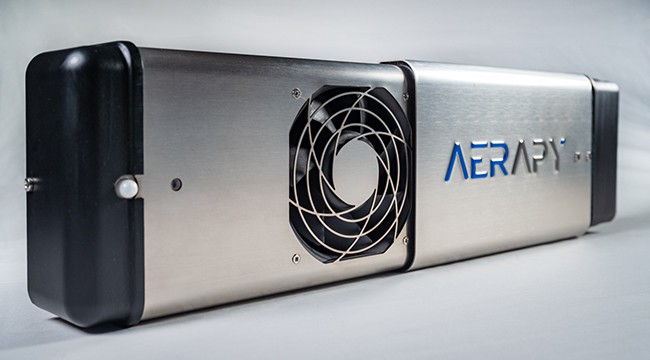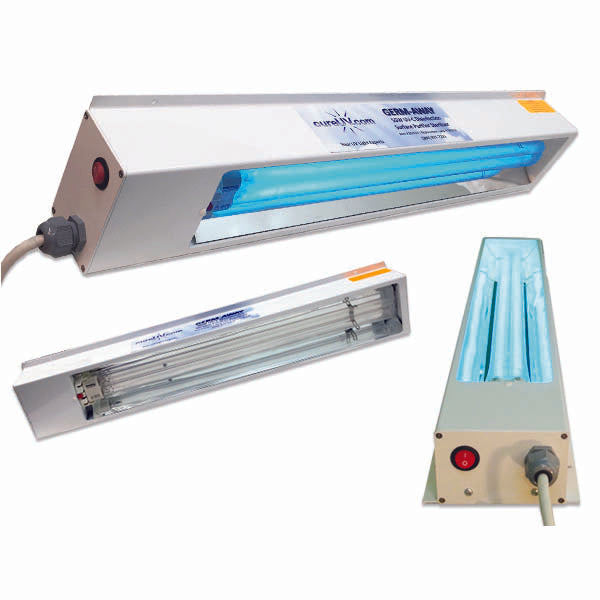Letting loose the Power of UV Surface Disinfection: Safeguarding Against Harmful Microorganisms
Wiki Article
Utilizing the Possible of UV Disinfection: Shielding Health And Wellness and Health
UV disinfection, a technology commonly utilized in different markets, has verified reliable in getting rid of damaging microorganisms. From comprehending the mechanisms at play to implementing this modern technology in our everyday lives, this discussion aims to drop light on the capacity of UV sanitation and its role in securing our health and hygiene.Comprehending UV Disinfection
UV disinfection is a highly efficient and extensively used technique for getting rid of damaging pathogens and making certain wellness and health. This technique uses ultraviolet (UV) light to suspend bacteria by harming their DNA and preventing them from duplicating. UV sanitation is especially effective versus germs, viruses, and various other bacteria that can cause diseases and infections.The principle behind UV disinfection is easy yet powerful. When UV light is sent out at a specific wavelength, it passes through the bacterium's cell wall and interrupts its hereditary material. This procedure, called photodissociation, results in the formation of thymine dimers, which protect against the bacterium from reproducing and rendering it harmless. UV sanitation can be used in numerous settings, consisting of water therapy plants, medical care centers, food processing industries, and air purification systems.
Among the advantages of UV disinfection is its capacity to efficiently and effectively eliminate a wide variety of virus without the need for additives or chemicals. Unlike other disinfection approaches, such as chlorine or ozone, UV sanitation does not present damaging byproducts or chemical deposits right into the atmosphere. Additionally, UV sanitation is a non-contact procedure, which implies that it does not call for physical call with the microbes, reducing the danger of cross-contamination.

The Science Behind UV Disinfection
The effectiveness of UV sanitation lies in its capability to interrupt the genetic material of microorganisms, rendering them not able to duplicate and thereby eliminating their dangerous possibility. This high-energy UV-C radiation is most effective in sanitation applications because it can permeate the cell wall surfaces of microorganisms and damage their DNA or RNA.When microbes are subjected to UV-C radiation, the energy is soaked up by their genetic material, causing bonds to damage and developing chemical responses that interrupt their capacity to replicate. This protects against the microbes from replicating and spreading infection. UV sanitation is specifically efficient versus microorganisms, infections, and fungi, consisting of common pathogens such as Escherichia coli, Salmonella, and Influenza.
The science behind UV sanitation is supported by considerable research study and studies. It has been shown that exposure to an adequate dosage of UV-C radiation can accomplish a high level of sanitation, commonly exceeding 99.9% effectiveness in killing microorganisms. It is important to note that the performance of UV sanitation depends on numerous elements, consisting of the strength of UV-C radiation, direct exposure time, distance from the UV source, and the susceptibility of the microbe to UV radiation (uv surface disinfection).
Applications of UV Disinfection
Offered the comprehensive research and effectiveness of UV sanitation in interrupting the genetic material of bacteria, it is necessary to check out the various useful applications of this innovation. UV disinfection has actually proven to be a valuable device in a vast array of markets where preserving a safe and tidy environment is important.One significant application of UV sanitation remains in medical care settings. UV light can be utilized to sanitize surfaces, tools, and also the air in medical facilities and medical facilities. This aids to lower the risk of healthcare-associated infections and guarantees a more secure atmosphere for patients and healthcare employees.
Another essential application remains in the food and beverage market. UV disinfection is used to treat water and get rid of hazardous microorganisms, such as E. coli and Salmonella, from the manufacturing procedure. uv surface disinfection. This makes sure the security and top quality of the products we eat
UV sanitation is likewise commonly used in water treatment plants and wastewater treatment facilities. It is a reliable technique for damaging dangerous bacteria, viruses, and parasites that can be present in water sources. This helps to supply risk-free and clean alcohol consumption water to neighborhoods and secure the official statement atmosphere from pollution.
Additionally, UV disinfection is utilized in the pharmaceutical industry to sanitize devices and keep the stability of items. It is likewise utilized in labs and study facilities to protect against contamination and make certain exact outcomes.
Advantages of UV Sanitation Technology
One notable advantage of utilizing UV disinfection modern technology is its capacity to successfully eliminate bacteria without using severe chemicals. This is especially useful in different setups, such as healthcare facilities, water treatment plants, and food handling industries, where the existence of harmful microorganisms postures a significant risk to public wellness and safety and security.
Unlike typical disinfection methods that count on chemicals like chlorine or ozone, UV disinfection modern technology uses ultraviolet light to target and damage the DNA of bacteria, efficiently neutralizing their ability to recreate and cause infections. This process not just gets rid of the demand for possibly hazardous chemicals yet also minimizes the danger of chemical residue or results continuing to be in the treated atmosphere.

Moreover, UV disinfection innovation is ecologically pleasant. As it does not count on the usage of chemicals, it removes the requirement for their disposal, transportation, and production, lowering the overall carbon impact related to sanitation processes. Additionally, UV sanitation systems have a longer life expectancy compared to chemical-based techniques, leading to much less frequent replacement and more lowering waste.
Carrying Out UV Disinfection in Every Day Life
To efficiently carry out UV sanitation in day-to-day live, people and companies can integrate portable UV sterilizing gadgets right into their health routines and cleansing practices. These devices are made to discharge ultraviolet light, which has actually been confirmed to kill or inactivate a large range of microbes, including bacteria, fungi, and viruses. By utilizing mobile UV sanitizing tools, individuals can disinfect typically touched surface areas and items, such as cell phones, doorknobs, laptop computers, and tricks, reducing the risk of spreading germs and infections.In addition to incorporating portable UV disinfecting click now devices, it is important to comply with proper standards and recommendations for reliable UV sanitation. This includes making sure that the device is used appropriately and for the suggested period to achieve ideal sanitation results. It is also vital to prioritize precaution, such as putting on safety glasses and staying clear of direct exposure of the UV light to the skin.

Moreover, organizations can carry out UV disinfection technology in different settings to enhance health practices. As an example, hospitals and medical care facilities can utilize UV sanitation robotics to disinfect person spaces, operating movie theaters, and various other high-touch areas. Food handling sectors can incorporate UV sanitation systems into their assembly line to enhance food security and prevent contamination.
Final Thought
In final thought, UV disinfection technology holds wonderful prospective in protecting health and hygiene. With its numerous advantages, UV sanitation is a useful device for maintaining a clean and healthy and balanced setting.Unlike various other disinfection approaches, such as chlorine or ozone, UV sanitation does not introduce dangerous byproducts or chemical deposits into the environment. It is essential to keep in mind that the efficiency of UV sanitation depends on numerous factors, including the intensity of UV-C radiation, exposure time, distance from the UV source, and the susceptibility of the microbe to UV radiation.
An additional advantage of UV sanitation technology is its ability to offer quick and continuous sanitation. Unlike manual cleaning methods, which can be taxing and require significant labor, UV sanitation systems can be automated and operate continually, guaranteeing constant disinfection without human treatment.To efficiently carry out UV sanitation in everyday life, individuals and companies can include mobile UV sanitizing tools into their health routines and cleaning practices.
Report this wiki page